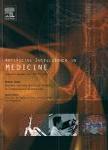版权所有:内蒙古大学图书馆 技术提供:维普资讯• 智图
内蒙古自治区呼和浩特市赛罕区大学西街235号 邮编: 010021

作者机构:Northeastern Univ Dept Mech & Ind Engn Boston MA 02115 USA Tunghai Univ Dept Ind Engn & Enterprise Informat Taichung Taiwan Taichung Vet Gen Hosp Puli Branch Dept Emergency Med Taichung Taiwan
出 版 物:《ARTIFICIAL INTELLIGENCE IN MEDICINE》 (人工智能在医学领域的应用)
年 卷 期:2020年第103卷第0期
页 面:101806-000页
核心收录:
学科分类:0831[工学-生物医学工程(可授工学、理学、医学学位)] 1001[医学-基础医学(可授医学、理学学位)] 0812[工学-计算机科学与技术(可授工学、理学学位)] 10[医学]
基 金:Northeastern Faculty Startup Fund Ministry of Science and Technology, Taiwan
主 题:Emergency department Critical care Unplanned ICU transfer Association rule Mixed-integer optimization
摘 要:After admission to emergency department (ED), patients with critical illnesses are transferred to intensive care unit (ICU) due to unexpected clinical deterioration occurrence. Identifying such unplanned ICU transfers is urgently needed for medical physicians to achieve two-fold goals: improving critical care quality and preventing mortality. A priority task is to understand the crucial rationale behind diagnosis results of individual patients during stay in ED, which helps prepare for an early transfer to ICU. Most existing prediction studies were based on univariate analysis or multiple logistic regression to provide one-size-fit-all results. However, patient condition varying from case to case may not be accurately examined by such a simplistic judgment. In this study, we present a new decision tool using a mathematical optimization approach aiming to automatically discover rules associating diagnostic features with high-risk outcome (i.e., unplanned transfers) in different deterioration scenarios. We consider four mutually exclusive patient subgroups based on the principal reasons of ED visits: infections, cardiovascular/respiratory diseases, gastrointestinal diseases, and neurological/other diseases at a suburban teaching hospital. The analysis results demonstrate significant rules associated with unplanned transfer outcome for each subgroups and also show comparable prediction accuracy (70%) compared to state-of-the-art machine learning methods while providing easy-to-interpret symptom-outcome information.